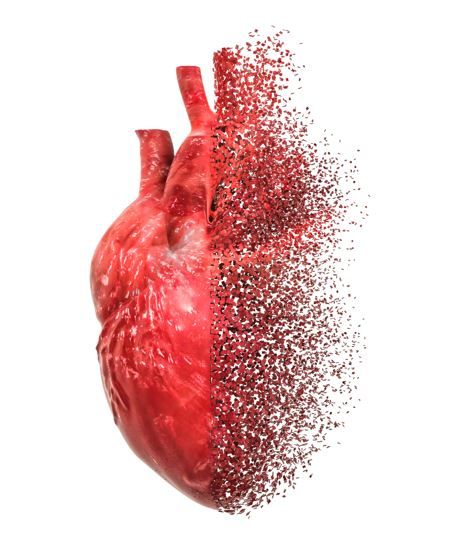Pericardial Fat Increases Risk for HF, Especially HFpEF
Results of this large study also suggest women with high pericardial fat volume are at greater risk for HF than men, findings that have implications for stratifying prevention and treatment.
©alexmlx/stock.adobe.com

Research released this week from Mount Sinai Research and published online May 24 in JACC found potential association between excess pericardial fat volume and risk of heart failure (HF), and particularly for HF with preserved ejection fraction (HFpEF), in both women and men.
The study, which is the largest to date to identify a link between pericardial fat and HF, found that women with greater pericardial fat were twice as likely to develop HF and men more than 50% more likely.
The association remained after adjusting for established risk factors for HF including age, cigarette smoking, alcohol consumption, sedentary lifestyle, hypertension, hyperglycemia, hyperlipidemia, and myocardial infarction.
"For nearly two decades we have known that obesity, based on simple measurement of height and weight, can double one's risk of heart failure, but now, we have gone a step further by using imaging technology to show that excess pericardial fat, perhaps due to its location close to the heart muscle, further augments the risk of this potentially fatal condition -- heart failure" said lead researcher Satish Kenchaiah, MD, associate professor of medicine (cardiology) at the Icahn School of Medicine at Mount Sinai, in a statement.
Using chest scans from the Multi-Ethnic Study of Atherosclerosis (MESA), investigators found an overall 5.6% occurrence of HF over a median (interquartile range) 15.7 (11.7-16.5) years of follow-up among the 6785 participants (aged 45-84 years; 3584 women; 3201 men). None had evidence of heart disease at study inception.
The definitions for high pericardial fat volume (PFV) differed according to sex: 70 cm3 for women (2.4 fl oz) and 120 cm3 for men (4.0 fl oz).
- More men than women with excess PFV developed heart failure (6.9% vs 4.6%)
- Women had a lower mean (SD) PFV (69 [33] vs 92 [47] cm3; P <.001)
- But women still had twice the risk of developing new-onset heart failure (HR, 2.06; 95% CI, 1.48-2.87; P<.001).
- The increased risk among men was 53% (HR, 1.53; 95% CI, 1.13-2.07; P =.006).
In analyses stratified by sex, the risk of heart failure remained significant even after additional adjustment for anthropometric indicators of obesity (p≤.008), abdominal subcutaneous or visceral fat (p≤0.03), or biomarkers of inflammation and hemodynamic stress (p<.001). The risk was similar among the 4 racial groups represented in the study, ie, White, Black, Hispanic, and Chinese (pinteraction= 0.24).
The effect of higher PFV volume more significantly increased risk of HFpEF (p<.001) vs heart failure with reduced ejection fraction (p = 0.31).
Multivariable analysis found, overall, that for every 1 SD (42 cm3) PFV increase was associated with a higher risk of heart failure among the sexes, with the effect more pronounced in women than in men:
- HR for women: 1.44 (95% CI, 1.21-1.74; P <.001)
- HR for men: 1.13 (95% CI, 1.01-1.27; P =.03)
The authors’ findings of a statistically significant association between PFV and heart failure diagnosis indicated a strong possibility that pericardial fat “is not just a surrogate for abdominal fat depot, but that its specific location around the heart may have a causal implication for the development of heart failure."
They concluded that PFV should be considered a risk factor. They also called in the paper for additional studies to “to differentiate the relative contribution of epicardial and paracardial fat depots, particularly given known differences in their embryological, anatomic, biochemical, biomolecular, and physiopathological profiles, to the risk of heart failure.”
The impact of lifestyle modifications and therapies that focus on reducing fat depots around coronary arteries and the heart also should be studied.